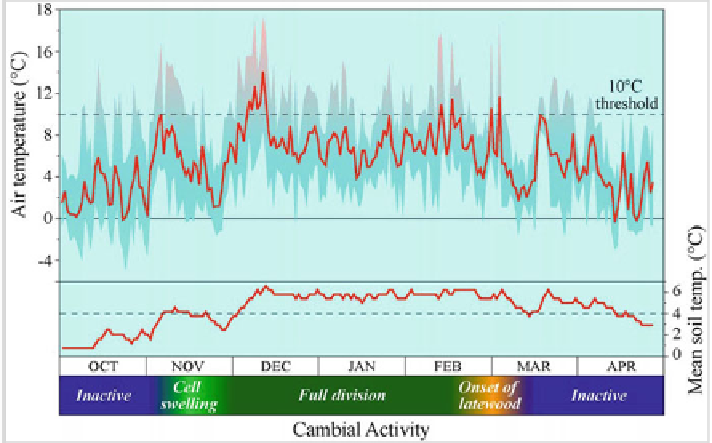Geoscience Reference
In-Depth Information
18
O cellulose is associated with year-to
The seasonality in climate and tree growth is an important feature to be con-
sidered in the processes of interhemispheric comparisons. For example, ENSO
matures during the boreal winter (austral summer) when the climatic anomalies set
by the extratropical teleconnections are more marked. However, tree responses vary
according to their location and biology, leading to wide variability between species
in the total amount of the ENSO signal captured by trees during the growing season
concurrent or following the event. There is a need for further investigation of the
basic processes that bring about year-to-year variations in tree-ring properties, cell
dimensions, wood chemistry, wood density, or ring width (Hartsough and Biondi
nation of weather stations and dendrometers will better characterize both the climate
to which the tree is responding and the season of wood formation, particularly in
tropical trees. A better understanding of the relationship between tree growth and
climate will facilitate the interpretation of the temporal climatic window recorded
by trees, which in turn will result in better, ecophysiologically sound reconstructions
of past climate variations.
rings. Interannual variability up to 8‰ in
δ
Box 7.9 Monitoring of tree growth dynamics to improve
dendroclimatic models
Box Fig. 7.17
Seasonal course of climate related to variations in ring morphology and leaf
phenology of
Nothofagus pumilio
trees in Tierra del Fuego, as illustrated by the 2002-2003
observational period. Air temperatures are at 1.2 m above ground and soil temperatures are
at 0.25 m underground (the layer with major development of the
Nothofagus
root system)

